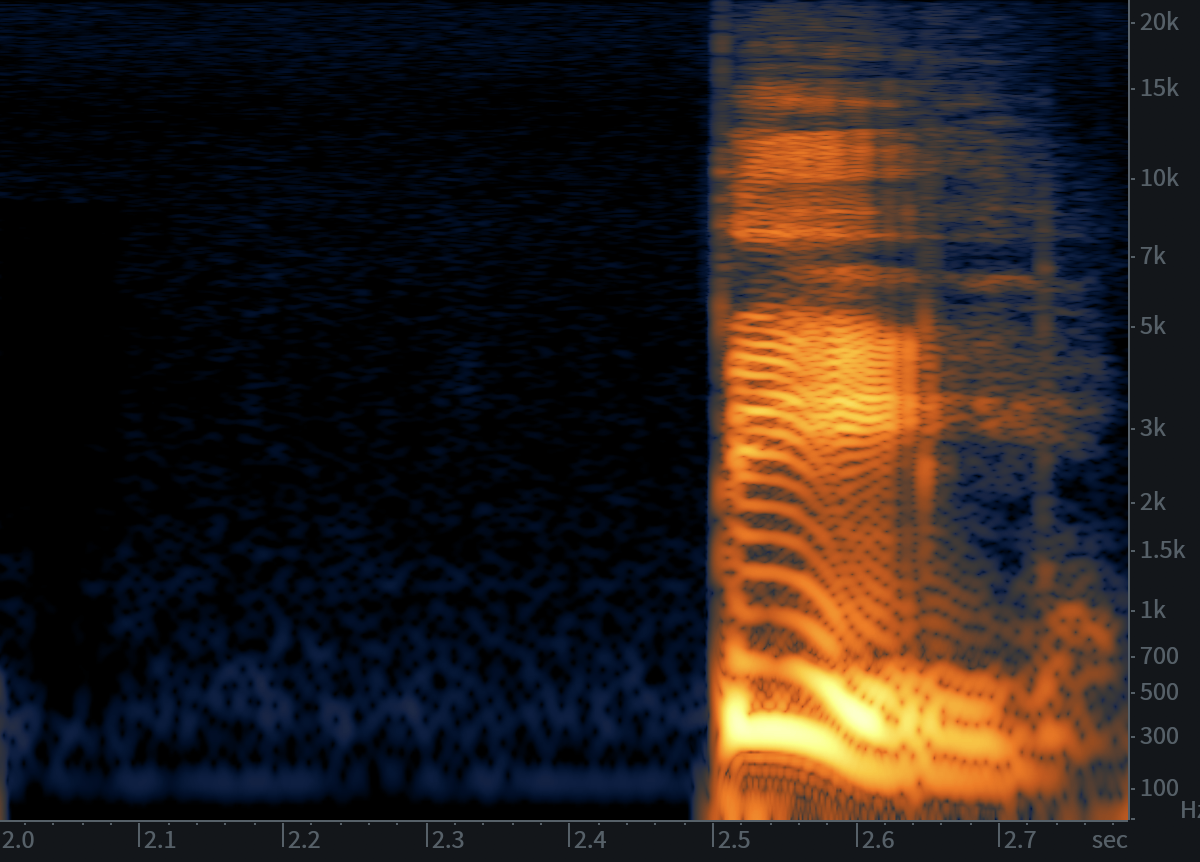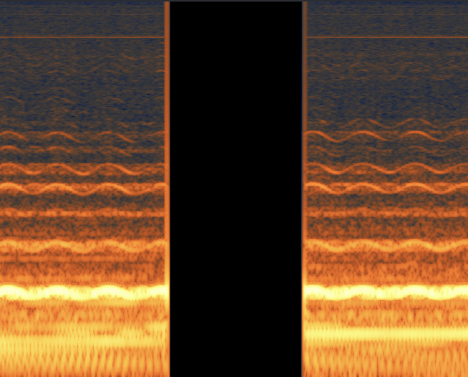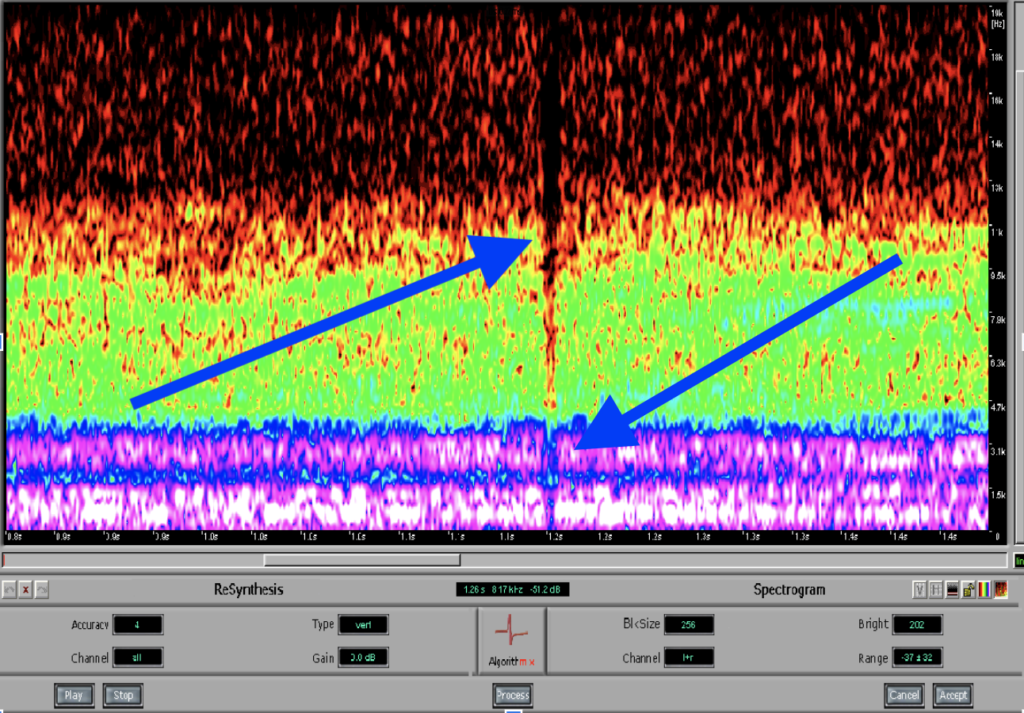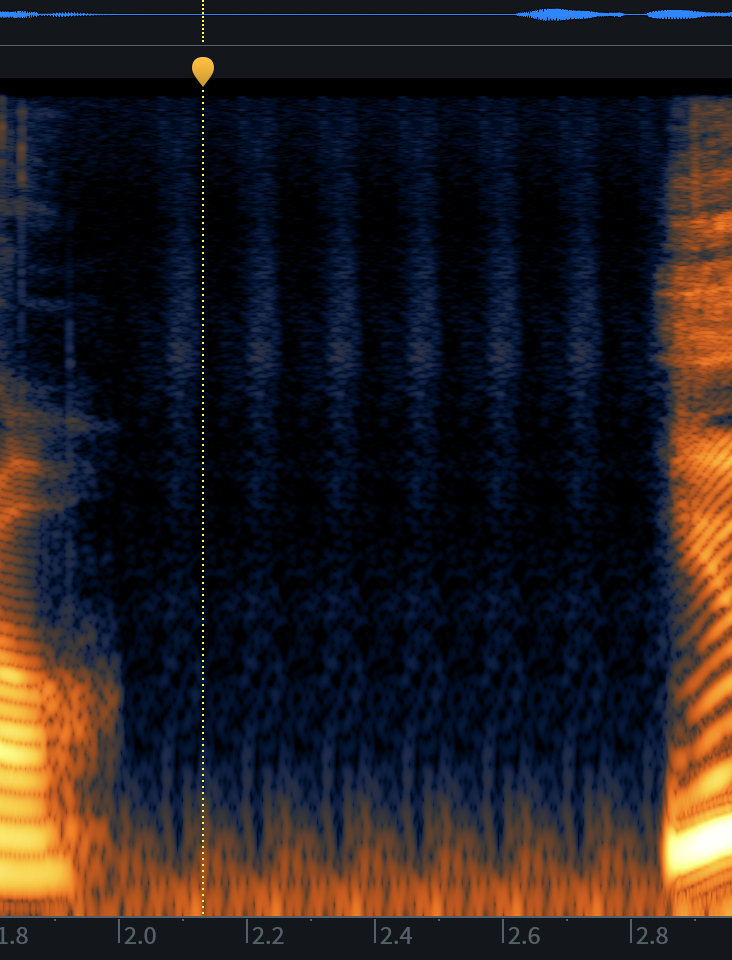Did you know that not all silence or room tones are made equal? While I would never advocate listening to things loudly, you do need to make sure you are listening loud enough to hear certain issues in your room tone. This was a mistake I made when I first started. Part of my first job archiving and restoring for the Metropolitan Opera with LongTail Audio (RIP) was to audition (listen to) the tapes as we transferred them. This had several motives. One– to make sure all the music was there (so that means we used a score), and Two– to document any noises or grave issues with the sound (heavy use of markers).
Because I was a newbie at things like this, I was super paranoid about damaging my hearing. I knew I was going to be listening on headphones for 8 hours or more a day, so naturally, I tried to make sure I didn’t overdo it. But, when you first start, everyone is watching your work (as they should be). And one of the main things that I was missing was dropouts. Dropouts happen in analog tape with anything from tape damage to the age of the tapes to how they play back on the machine. This is what they look like if you view the spectral content.
By looking at it, you would think it’s impossible that you wouldn’t hear this. (To be fair this picture is probably a digital dropout which means you lose everything even for a few ms). But a lot of times, the dropout doesn’t manifest like a loss of programming. Sometimes it’s a momentary drop of tape hiss. Sometimes it actually sounds like a thud.
The good thing is there are ways to fix them if you have programs that can interpolate – like Izotope RX’s Spectral Repair or Cedar, etc. But my main point of this blog is that you need to be able to hear them.
The engineer that trained me on this job was someone I really admired and looked up to, I-hua Tseng. She was an amazing engineer who left us too soon, and I’m happy that I had the opportunity to work and learn from her. What she told me was to focus on the hiss. Most artifacts would jump out at you, but if you focus on the hiss, any momentary change or loss of signal will also jump out at you since your ear becomes accustomed to the noise floor. So your ear will detect a change if there is a loss. Your ears are amazing, so make sure you use them to their full capacity!
This brings me to the next important piece of “silence” which is room tone.
Do you know that not all room tone sounds the same? We worked with an entire folder of different room tones to fix things when they were needed. We had mono room tone, stereo room tone, dark room tone, bright room tone, room tone from the 70s, 60s, 30s, 40s, Dolby encoded, not. (Feeling like Bubba Gump here, but you get the idea) Anytime we ran into a good length or room tone, we would cut and export and drop it in the folder for the future.
Why would you need room tone? Because you don’t always go to digital black after something ends. Let’s say you’re in between movements of something or the tape ends and the room tone cuts off abruptly so you just need a little more to create a nice fade out, these are some of the reasons you would need room tone.
As I said, not all room tones are equal. The reason we had folders of room tone is that sometimes the programming wouldn’t contain anything you could work with. In this case, you would find the one that matched the best, and crossfade that into the other. And listen, sometimes you couldn’t find a perfect match, so instead of fading the existing room tone with another not as closely sounding one, you just replace it with the new one. It’s like trying to match navy and black; if you can’t get them to match exactly, you will notice. So just stick with one.
Did you know you also need room tone in podcasting? If you have a reporter who was done a lot of field recording, you also need room tone. Sometimes the interviews are done in less-than-ideal environments, so once that interview is edited, you’ll need room tone so that the noise floor doesn’t drop right away. This may seem tedious sometimes if there is a lot from this interview, but it does wonders when you are listening to a podcast and you don’t have someone’s quote just cut off because there is not a nice smooth fade. You can help your producers by asking them to ALWAYS record room tone any time they are out in the field reporting. This way you’re not scrambling to fake and create things out of nothing.
This may seem like a no-brainer and you’re now questioning why I’m even bothering to write this blog, but you would be surprised how much sloppy room tone I’ve heard and/or received. Creating a nice unnoticeable room tone to the listener is an art – an art many people in this industry take for granted because they think they should be doing more important things. But even something as small as room tone should be done with care.
Above I said we would look for a good length of room tone when we found and save that. That’s because if you grab less than one second and loop it if there is one tiny little bump, it will look like the above. And anyone will hear that. It sounds like a rattle or even a weird stutter sound effect (which may be cool in your pop track but not here). The fact that someone sent this to me to finalize says to me this person was not listening at a level that you could hear this OR this person only listened on speakers. I know in our field people constantly tell you to listen on speakers and “mixing on headphones is a no-no,” but critical listening really is better on headphones (IMHO). I *always* listen to my work and my mixes with headphones at some point – usually at consistent intervals just for checks and balances.
You do learn to look (listen) out for these things, so nowadays after having done this for 15 years, I can identify them quickly. But it’s important to train your ears. Whether it’s identifying anomalies or learning what 250 hz sounds like, invest in your craft – and by invest I mean your time! Not everything has a price on it. The better you are at hearing things, the better engineer you will be.
This was a great tool when I started: Golden Ears by Moulton Laboratories. They were several CDs (lol CDs) that had exercises to train you to identify different frequencies, EQs, and different processing. (Someone also conveniently uploaded some to Soundcloud here, so get your listen on).
Nowadays there are lots of A.I. ways to create room tone. Izotope RX10 has Ambience Match which generates and matches the noise floor. But make sure you listen to your room tone, don’t settle because you’re in a hurry. Having attention to detail and seamless editing will set you apart from everyone else.



